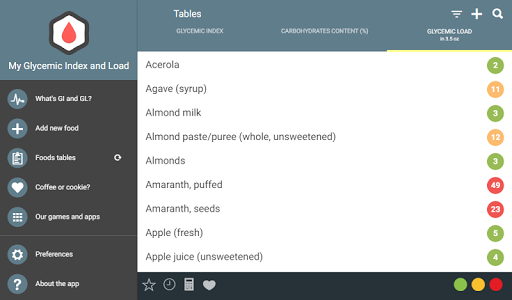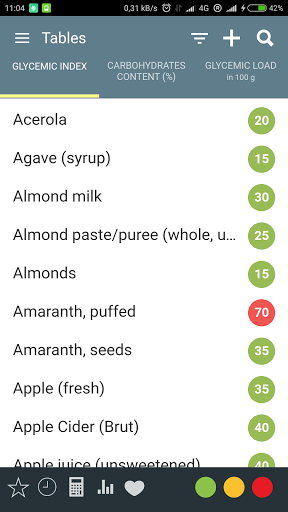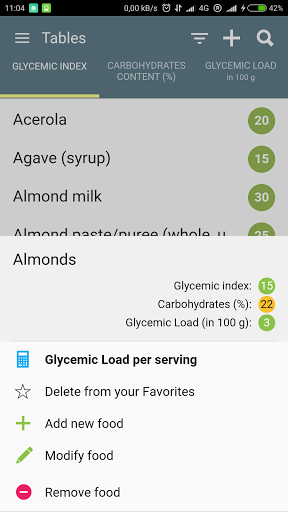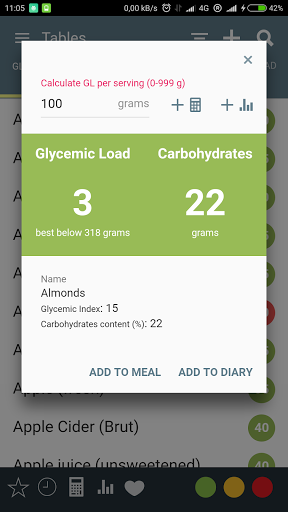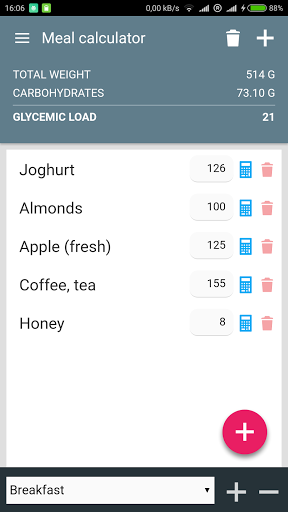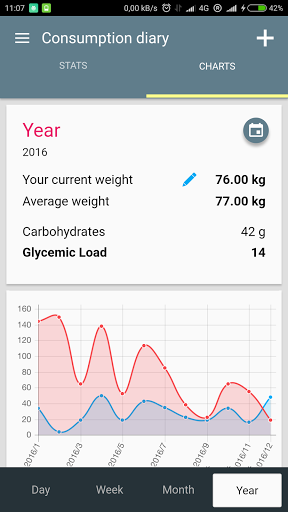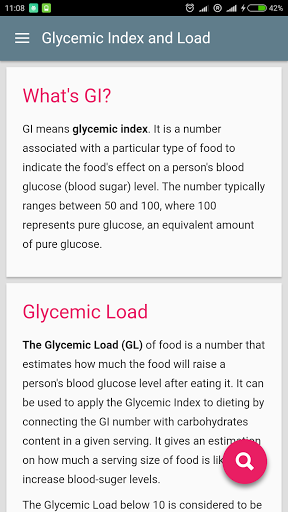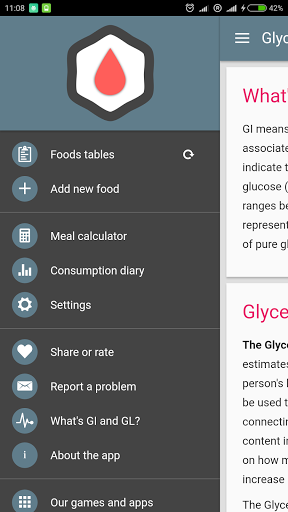In short
Glycemic Index & Load Diet Aid is a free app for Android created by cream.software. It can be recommended to other friends. And this is a perfect way to make good choices.
Highlights
Very handy app especially when trying to avoid high sugar spikes
Very helpful for making good choices for my diabetic family member
App is easy to incorporate into my daily lifestyle transition
Easy to use for quick look ups and reference
Very useful for menu and recipe planning
Recommended it to other friends as well
Used the embedded tutorials and that helped learn the meal builder
Thanks for the weight tracker in the new version
The customer support is awesome by the way
Outstandingly helpful could use more everyday foods
All of the other rice figures are similarly wrong
It wouldn't matter because of the very limited food database
Keeps sticking offers in your face with annoying popups
Tried to find something basic like Doritos and it comes up blank
Which is too bad since it isn't very user friendly
Description
This is a free and ads free app that lets you easily browse, search for, and display the Glycemic Index for different foods. Additionaly you can access Glycemic Load and carbohydrates contents in foods. There's also a calculator of the Glycemic Load in a given serving. Knowing these values and following a low-carb diet like Montignac, Paleo, Atkins, low-GI and similar, helps avoid weight gain or obesity and lower the risk of diabetes, coronary heart and age-related health diseases. The Glycemic Index features are free and the app contains no ads! The Glycemic Load and Carbohydrates functions cost a few bucks. There is no need to register or login anywhere to use it. All user data are saved in the device. With My Glycemic Index you can: + know good food + eat smart + follow low-carb diets + prevent diseases + fight weight gain, overweight and obesity + benefit from modern multilingual app UI + have the Glycemic Load, Index and carbs data always at hand The free part of the app is the Glycemic Index feature. If you want to utilize the other exciting features like below, you can unlock them with the following one-time purchases: + Additional data and calculators of Glycemic Load and Carbs per serving or whole meals. + Food diary with statistics of food, Glycemic Load, Carbohydrates consumption averages for daily, weekly, monthly and yearly periods. + Beautiful charts of the GL and carbs consumption over time. GI means glycemic index. It is a number associated with a particular type of food to indicate the food's effect on a person's blood glucose (blood sugar) level. The Glycemic Load (GL) of food is a number that estimates how much the food will raise a person's blood glucose level after eating it. Because GL is related to the food's effect on blood sugar, low-GL meals are often recommended for diabetic control and weight loss. Did you know that recent studies from the Harvard School of Public Health indicate that the risks of diseases such as type 2 diabetes and coronary heart disease are strongly related to the GI of the overall diet. In 1999, the World Health Organisation (WHO) and Food and Agriculture Organisation (FAO) recommended that people in industrialised countries base their diets on low-GI foods in order to prevent the most common diseases of affluence, such as coronary heart disease, diabetes and obesity. The Glycemic load appears to be a significant factor in dietary programs targeting metabolic syndrome, insulin resistance, and weight loss; studies have shown that sustained spikes in blood sugar and insulin levels may lead to increased diabetes risk. The Shanghai Women's Health Study concluded that women whose diets had the highest glycemic index were 21 percent more likely to develop type 2 diabetes than women whose diets had the lowest glycemic index. For diabetics, glycemic load is a highly recommended tool for managing blood sugar. What is a low carb diet? Low-carbohydrate diets or low-carb diets are dietary programs that restrict carbohydrate consumption, often for the treatment of obesity or diabetes. Low-carbohydrate diets are used to treat or prevent some chronic diseases and conditions, including cardiovascular disease, metabolic syndrome, high blood pressure, and diabetes. A low-GI food releases glucose more slowly and steadily, which leads to more satisfactory blood glucose readings after meals. A high-GI food causes a more rapid rise in blood glucose levels; this is best for energy recovery after exercise or for a person experiencing hypoglycemia. So, do you know what you eat? Find out now! Install our app and use it for free and simply take control of your health.
More


